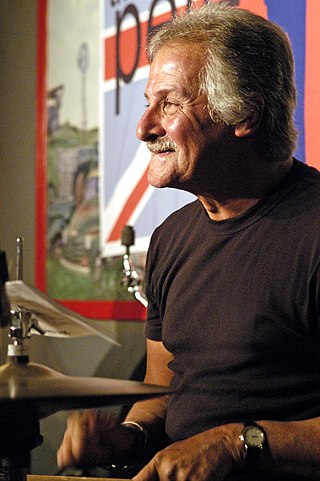
Randolph Peter Best is an English musician who was the drummer for the Beatles from 1960 to 1962. He was dismissed shortly before the band achieved worldwide fame and is one of several people referred to as a fifth Beatle.
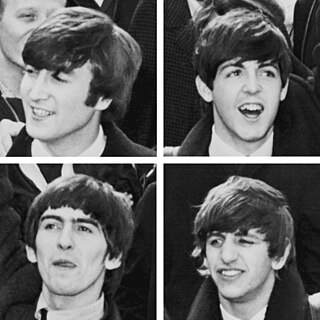
The Beatles were an English rock band formed in Liverpool in 1960. The core lineup of the band comprised John Lennon, Paul McCartney, George Harrison, and Ringo Starr. They are widely regarded as the most influential band of all time and were integral to the development of 1960s counterculture and the recognition of popular music as an art form. Rooted in skiffle, beat, and 1950s rock 'n' roll, their sound incorporated elements of classical music and traditional pop in innovative ways. The band also explored music styles ranging from folk and Indian music to psychedelia and hard rock. As pioneers in recording, songwriting, and artistic presentation, the Beatles revolutionized many aspects of the music industry and were often publicized as leaders of the era's youth and sociocultural movements.

The fifth Beatle is an informal title that has been applied to people who were at one point a member of the Beatles or who had a strong association with John Lennon, Paul McCartney, George Harrison, and Ringo Starr.
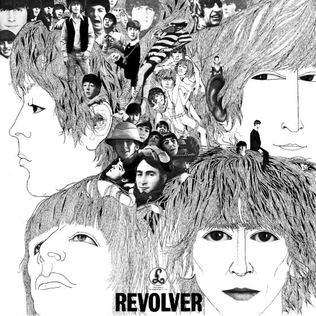
Revolver is the seventh studio album by the English rock band the Beatles. It was released on 5 August 1966, accompanied by the double A-side single "Eleanor Rigby" / "Yellow Submarine". The album was the Beatles' final recording project before their retirement as live performers and marked the group's most overt use of studio technology to date, building on the advances of their late 1965 release Rubber Soul. It has since become regarded as one of the greatest and most innovative albums in the history of popular music, with recognition centred on its range of musical styles, diverse sounds and lyrical content.
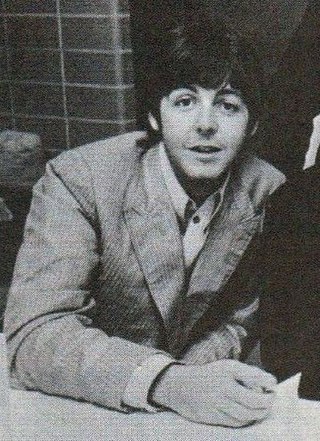
"Paul is dead" is an urban legend and conspiracy theory alleging that English musician Paul McCartney of the Beatles died in 1966 and was secretly replaced by a look-alike. The rumour began circulating in 1966, gaining broad popularity in September 1969 following reports on American college campuses.

Brian Samuel Epstein was an English music entrepreneur who managed the Beatles from 1961 until his death in 1967.

Geoffrey Ernest Emerick was an English sound engineer and record producer who worked with the Beatles on their albums Revolver (1966), Sgt. Pepper's Lonely Hearts Club Band (1967) and Abbey Road (1969). Beatles producer George Martin credited him with bringing "a new kind of mind to the recordings, always suggesting sonic ideas, different kinds of reverb, what we could do with the voices".

A Collection of Beatles Oldies is a compilation album by the English rock band the Beatles. Released in the United Kingdom in December 1966, it features hit singles and other songs issued by the group between 1963 and 1966. The compilation served as a stopgap release to satisfy EMI's demand for product during the Christmas period, since the Beatles had only begun recording Sgt. Pepper's Lonely Hearts Club Band, the follow-up to their Revolver album, late the previous month. It was the band's first official greatest hits collection, although the Beatles had no involvement in the album.
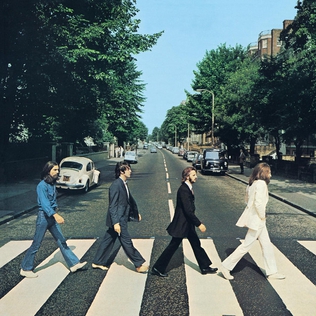
Abbey Road is the eleventh studio album by the English rock band the Beatles, released on 26 September 1969, by Apple Records. It is the last album the group recorded, although Let It Be (1970) was the last album completed before the band's break-up in April 1970. It was mostly recorded in April, July, and August 1969, and topped the record charts in both the United States and the United Kingdom. A double A-side single from the album, "Something" / "Come Together", was released in October, which also topped the charts in the US.
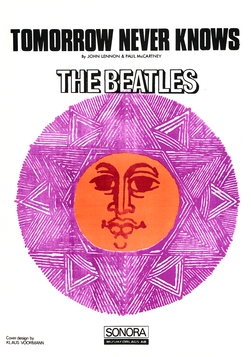
"Tomorrow Never Knows" is a song by the English rock band the Beatles, written primarily by John Lennon and credited to Lennon–McCartney. It was released in August 1966 as the final track on their album Revolver, although it was the first song recorded for the LP. The song marked a radical departure for the Beatles, as the band fully embraced the potential of the recording studio without consideration for reproducing the results in concert.

Paul Is Live is a live album by Paul McCartney, released in 1993 during his New World Tour in support of his studio album Off the Ground, released that same year. Paul Is Live contains live recordings of McCartney and his touring band—which at the time included his then-wife Linda and guitarist Robbie McIntosh—performing songs by McCartney's former bands The Beatles and Wings, as well as songs from his solo career. The tracks included on the album were recorded at various concerts during his New World Tour, in several American cities and in Australia.

"You Never Give Me Your Money" is a song by the English rock band the Beatles. It was written by Paul McCartney, and thematically documents the personal difficulties that were facing the band. The song is the first part of the medley on side two of their 1969 album Abbey Road and was recorded in stages between May and August that year.

"Your Mother Should Know" is a song by the English rock band The Beatles, from their 1967 EP and LP, Magical Mystery Tour. It was written by Paul McCartney and credited to Lennon–McCartney. Titled after a line in the 1961 film A Taste of Honey, its lyrical premise centres on the history of hit songs across generations. McCartney said he wrote it as a plea for generational understanding and respect for a mother's life experience. In the Magical Mystery Tour television film, the song serves as a big production number in the style of a 1930s Hollywood musical. Some commentators view the sequence as cultural satire, as the Beatles are seen dancing and dressed in white evening tails.
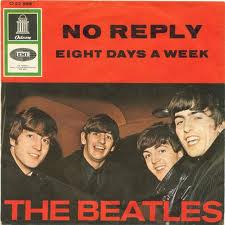
"No Reply" is a song by the English rock band the Beatles from their 1964 album Beatles for Sale. In North America, it was issued on Capitol Records' variant on the British release, Beatles '65. The song was written mainly by John Lennon and credited to Lennon–McCartney. Lennon originally gave the song to another artist managed by Brian Epstein, Tommy Quickly, in June 1964, but Quickly decided not to use it. The Beatles recorded the track in London soon after returning from their first full tour of the United States. The lyrics typify Lennon's more introspective and mature songwriting on the Beatles for Sale album.
The Beatles were an English rock band, active from 1960 until 1970. From 1962 onwards, the band's members were John Lennon, Paul McCartney, George Harrison and Ringo Starr. Their break-up is attributed to numerous factors, including: the strain of the Beatlemania phenomenon, the 1967 death of their manager Brian Epstein, bandmates' resentment of McCartney's perceived domineering behaviour, Lennon's heroin use and his relationship with Yoko Ono, Harrison's increasingly prolific songwriting, the floundering of Apple Corps, the Get Back project and managerial disputes.
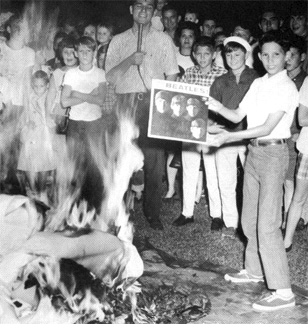
"More popular than Jesus" is part of a remark made by John Lennon of the Beatles in a March 1966 interview, in which he argued that the public were more infatuated with the band than with Jesus, and that Christian faith was declining to the extent that it might be outlasted by rock music. His opinions drew no controversy when originally published in the London newspaper The Evening Standard, but drew angry reactions from Christian communities when republished in the United States that July.

The studio practices of the Beatles evolved during the 1960s and, in some cases, influenced the way popular music was recorded. Some of the effects they employed were sampling, artificial double tracking (ADT) and the elaborate use of multitrack recording machines. They also used classical instruments on their recordings and guitar feedback. The group's attitude towards the recording process was summed up by Paul McCartney: "We would say, 'Try it. Just try it for us. If it sounds crappy, OK, we'll lose it. But it might just sound good.' We were always pushing ahead: Louder, further, longer, more, different."
The Beatles Anthology is a documentary television series on the career of the Beatles. It was broadcast on UK television in six parts on ITV between 26 November and 31 December 1995, while in the United States it was seen as three feature-length episodes on ABC between 19 and 23 November 1995. It was released in greatly expanded form as an eight-volume VHS set and an eight-disc LaserDisc set on 5 September 1996. The series was re-released on DVD in 2003, with an 81-minute special-features disc.
The English rock band The Beatles auditioned for Decca Records at Decca Studios in West Hampstead, north London, on 1 January 1962. They were rejected by the label, who instead opted to sign a contract with Brian Poole and the Tremeloes. The audition was recorded, and five of the songs—"Searchin'", "Three Cool Cats", "The Sheik of Araby", "Like Dreamers Do" and "Hello Little Girl"—were officially released on the compilation Anthology 1 in 1995.

The Beatles: The Authorised Biography is a book written by British author Hunter Davies and published by Heinemann in the UK in September 1968. It was written with the full cooperation of the Beatles and chronicles the band's career up until early 1968, two years before their break-up. It was the only authorised biography of the Beatles written during their career. Davies published revised editions of the book in 1978, 1982, 1985, 2002, 2009, and 2018.
















